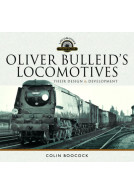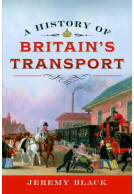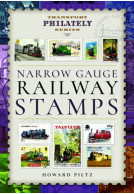Seventy Years of Railway Photography (ePub)
Seven Decades Behind the Lens
Imprint: Pen & Sword Transport
File Size: 52.1 MB (.epub)
Pages: 255
Illustrations: 300
ISBN: 9781526700148
Published: 26th March 2018
| Other formats available - Buy the Hardback and get the eBook for free! | Price |
|---|---|
| Seventy Years of Railway Photography Hardback Add to Basket | £30.00 |
Colin Boococks' railway photographs are already familiar as they have been featured in a variety of railway books and magazines. This book shows around 300 of his favourite images that illustrate the many different aspects of railway photography.
The key seven chapters in this book each cover one decade from the 1940s up to the present day. Not only do they display the early improvement in his photography as he gained experience, they also bring into focus how much railways have changed over the last seventy years. Grimy steam locomotives in smoky surroundings persisted in ever-reducing pockets as more modern forms of traction spread across our railways. Working steam finally disappeared from UK main lines in 1968 and around coal mines in the mid-1980s.
The later chapters benefit greatly from Colins' world-wide travels, in which he searched for more unfamiliar railways. The growth of heritage railways also features.
Useful appendices add insights into Colins' experience of camera technologies and photographic techniques. These emphasise the changes that have faced him as his photography has moved from black-and-white to colour, and from films and darkrooms to the computer and the digital age. Colin last used film in early 2004, having embraced digital photography with enthusiasm.
One of the best known present day photographers. Colin Boocock, has written about his life and photography.
Roger Backhouse, Society of Model & Experimental Engineers
As featured by
Rail, 5th December 2018
Colin brings together some of his favourite images and writes knowledgeably about traction, as well as offering pertinent tips on taking pix.
ASLEF Journal Dec 2018
Essentially this album is about the lifetime of the author and his love of both railways and photography, covering the last 70 years, this passion continuing unabated today. Featuring over 300 monochrome and colour pictures from his worldwide travels, each with a detailed and informative caption, some with relevant photographic data.
Railway Correspondence and Travel Society
Because it provides a unique photographic record of the period 1947-2017, there is no doubt that this volume will appeal to readers with an interest in the railways of Great Britain over that time. In many instances, the images capture now-departed aspects of British culture, and as a result, Social Historians might also find the volume useful as a research tool. Photographers and railway modellers are likely to find the images and articles relating to their interests useful, with the qualified assumption (due to the lack of an Index) that they can actually locate such material. Non -‘railway enthusiast’ readers looking for pictures of ‘pretty trains’ might also find it worthy of their attention. In summary: An excellent, well written and very informative volume; a shame about the Index and Maps…
NZ Crown Mines
About Colin Boocock
COLIN BOOCOCK is a retired railway officer whose career, mainly in mechanical and electrical engineering, spanned forty-one years full-time work on British Railways and Railtrack and a further twelve or so years in part-time consultancy.
His career started at Eastleigh Works on the Southern Region, where he was trained in the late 1950s, later going on to work at railway establishments in all of BR’s original Regions including spells in Scotland and Wales, mainly managing the maintenance of locomotives and rolling stock at a senior level.
As a life-long railway enthusiast, he travelled widely on Britain’s railways but always had a keen interest in the developments on what he still regards as his ‘home railway’, the South Western.
This volume describes in some detail the railway he grew up on: the South Western, its main lines, key railway centres and the fascinating myriad of secondary routes and branch lines.


















